The Alister Clark Memorial Rose Garden is a special place in Australia. It holds the only complete collection of roses created by a famous Australian rose breeder named Alister Clark (1864–1949). The garden is located near "Glenara," which was his old home and garden in Bulla, Victoria. This is about 10 kilometers northwest of Melbourne Airport.
Alister Clark created at least 150 different types of roses. Today, 83 of these are still known to exist, and some others are thought to be his work. Eight of his roses can only be found outside Australia. Volunteers, with help from the Hume City Council, take care of this important garden.
Roses in the Garden
This section shows many of the Alister Clark roses that grow in the Memorial Garden. Some related roses are also here. Alister Clark often used a type of rose called Rosa gigantea to create new varieties. His "Hybrid Gigantea" roses often bloom once a year for a long time. They look their best around Christmas, but some, like 'Courier', 'Tonner's Fancy', and 'Pennant', are better in early spring.
Most of the pictures below were taken in the Alister Clark Memorial Rose Garden.
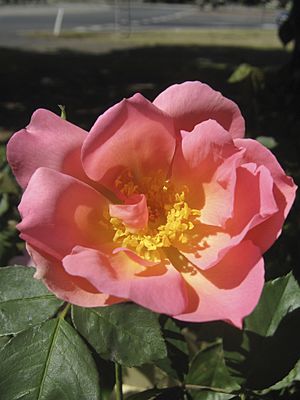
'Amy Johnson', 1931, Hybrid Tea. This rose is named after Amy Johnson, a brave pilot who was the first woman to fly alone from England to Australia.
|

'Australia Felix', 1919, Hybrid Tea. This rose grows low but is not a dwarf. "Australia Felix" means "happy Australia." It was a name given to beautiful parts of western Victoria by an explorer named Thomas Mitchell.
|

'Baxter Beauty' was found by Russell Grimwade before 1927. It is a natural change (called a "sport") of Clark's 'Lorraine Lee' rose.
|
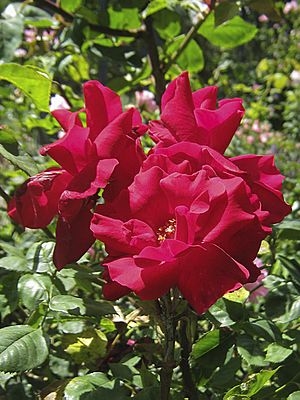
'Billy Boiler', 1927, Hybrid Tea. "Billy boiler" was a slang term for a very hot day.
|
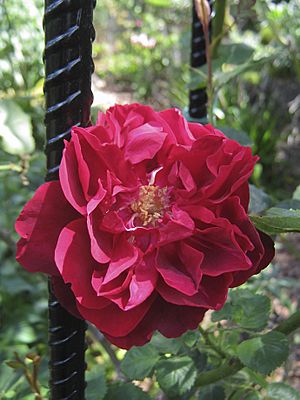
'Black Boy', 1919, Hybrid Tea climber. This was the most popular climbing rose in Australia between the World Wars.
|

'Borderer', 1919, Floribunda. Floribunda roses have many flowers in clusters.
|
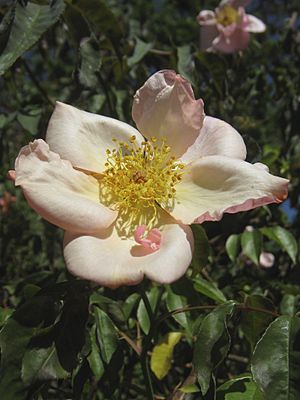
"Broadway", 1933, Hybrid Gigantea. This rose was probably created by Clark. It is also known as "Mrs Oswin's Gigantea."
|
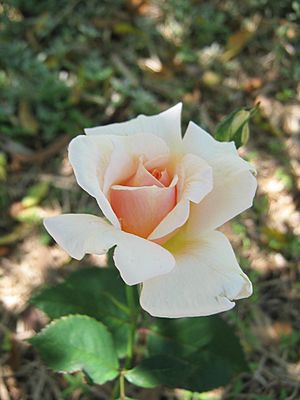
'Busybody', 1929. This is a small Hybrid Tea rose with a nice smell. Its color is apricot-beige and gets deeper in autumn.
|
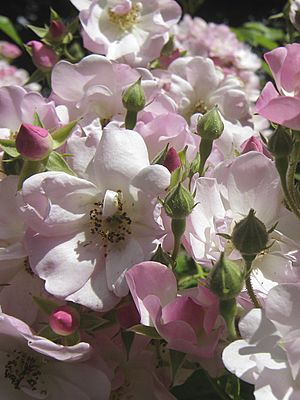
'Cherub', 1923, Rambler. Rambler roses have long, flexible stems that can climb.
|

'Cicely Lascelles', 1937, Climber. Cicely Lascelles (1895–1989) was a champion golfer. Her family were friends with the Clarks.
|

'Cicely O'Rorke', 1937, Climber. Cicely O'Rorke was a relative from New Zealand who often stayed with the Clarks.
|
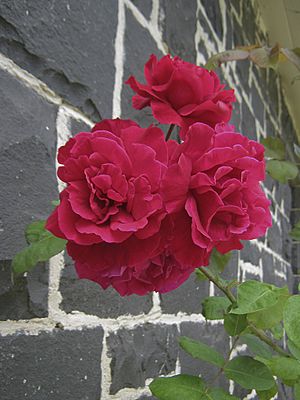
'Countess of Stradbroke', 1928, Climber. The Earl of Stradbroke was the Governor of Victoria from 1920 to 1926. The Countess was a friend who visited the Clarks.
|
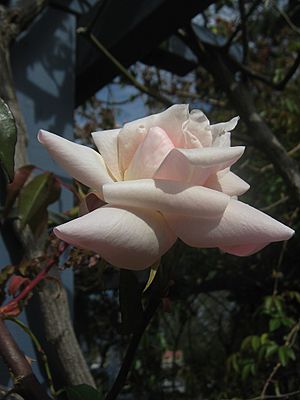
'Courier', 1930, Hybrid Gigantea climber. This rose was probably named after a racehorse from that time.
|
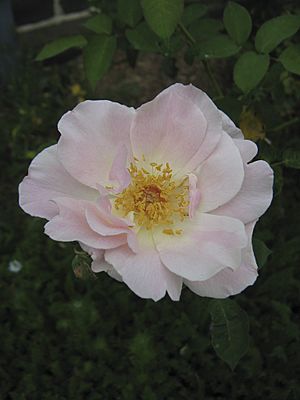
'Daydream', 1925, Climber. Alister Clark said this rose looked "like a waterlily."
|
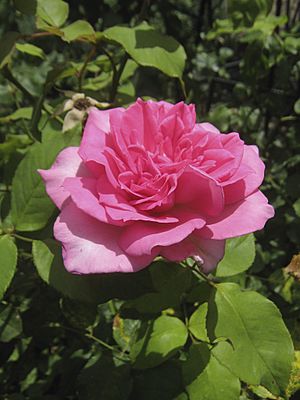
'Diana Allen', 1939, Hybrid Tea. This rose has a Damask scent. Diana Allen was a Clark family friend and a champion skier.
|
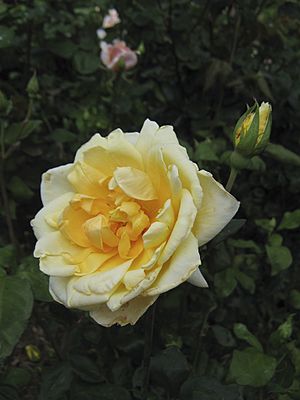
'Dividend', 1931, Hybrid Tea. Dividend was the name of one of Alister Clark's successful racehorses.
|
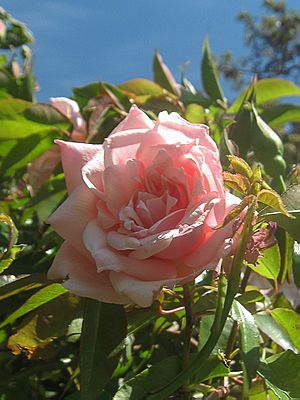
'Doris Downes', 1932, Hybrid Gigantea. This rose has a lovely scent. Doris Mary Robb was a stylish lady from Melbourne who was also a rose breeder like Clark.
|
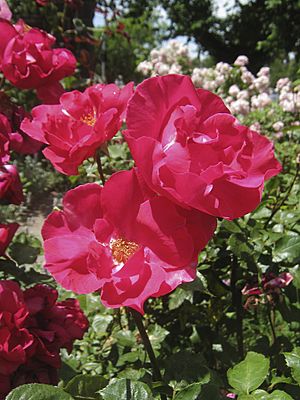
'Editor Stewart', 1939, Hybrid Tea. T.A. Stewart was the editor of the Australian Rose Annual for 30 years.
|

'Emily Rhodes', 1937, Climber. Emily Rhodes was Alister Clark's sister-in-law from New Zealand.
|

'Fairlie Rede', 1937, Hybrid Tea. Fairlie Rede was an artist who ran a plant nursery. She also edited the Australian Rose Annual for a while.
|
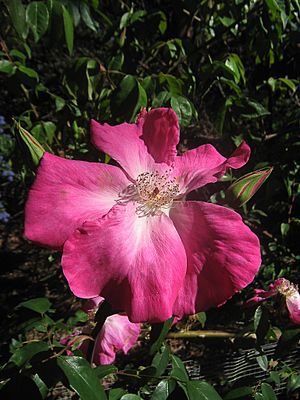
'Flying Colours', 1922, Hybrid Gigantea climber. This rose has very large, scented flowers that bloom once a year. Flying Colours was also a racehorse.
|
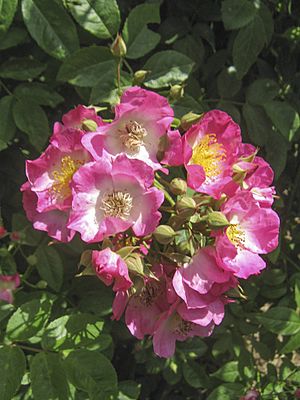
'Gladsome', 1937, Hybrid Multiflora. This rose puts on a huge display of flowers, but only in spring.
|
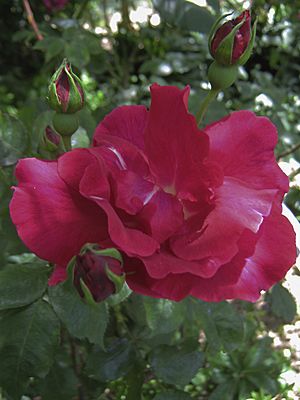
'Glenara', 1951, Hybrid Tea. This rose was found at the Clarks' house, which was also named Glenara.
|
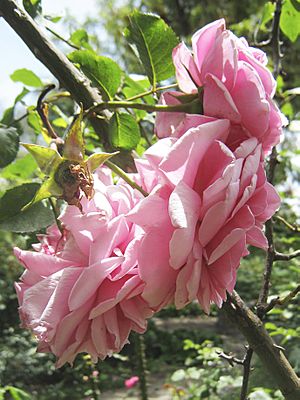
'Glenara No. 14'. This is a two-toned pink Hybrid Tea climber. It was found at Glenara in 2001.
|
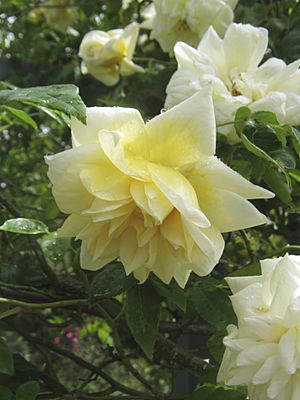
'Golden Vision', 1922, Hybrid Gigantea climber. This rose blooms once in spring or summer. Its color is more lemon-yellow than golden.
|
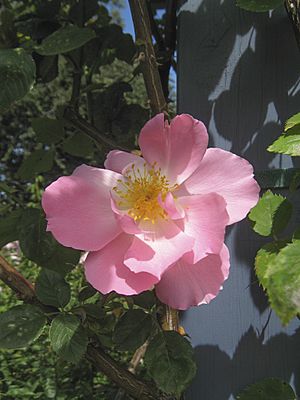
'Gwen Nash', 1920, Hybrid Tea climber. Gwendoline Alice Nash was part of a family very close to the Clarks.
|
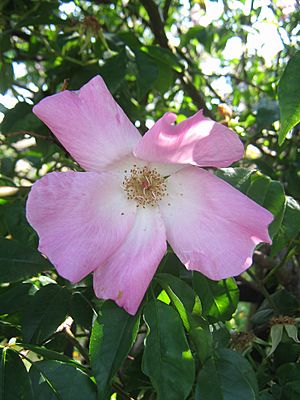
'Harbinger', 1923, Hybrid Gigantea. A "harbinger" is something that signals the arrival of something else, like spring.
|

'Herbert Brunning', 1940, Hybrid Tea. Herbert John Brunning was a well-known plant nursery owner and important member of the National Rose Society.
|
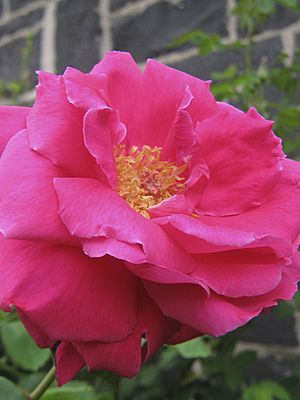
'Janet Morrison', 1936, Hybrid Tea. Elizabeth Janet Morrison was married to a well-known doctor in Melbourne.
|
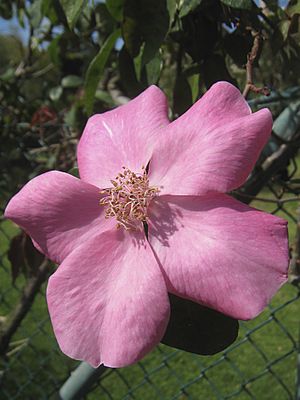
'Jessie Clark', 1915, Hybrid Gigantea. Lady Jessie Johnston was Alister Clark's niece. This rose was his first successful rose from Rosa gigantea.
|
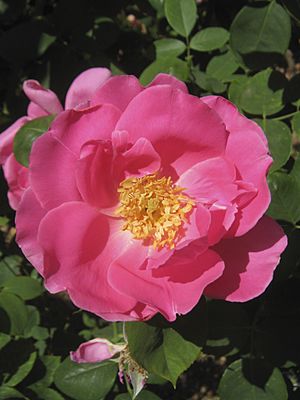
'Kitty Kininmonth', 1922, Hybrid Gigantea climber. Kitty Kininmonth's family has grown this rose since it was named for her.
|
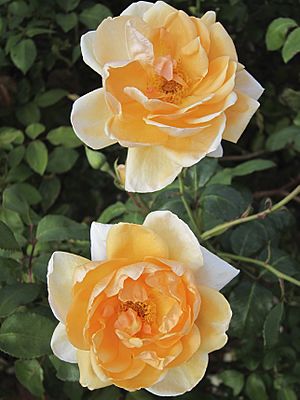
'Lady Huntingfield', 1937, Hybrid Tea. Margaret Crosby married the Baron Huntingfield, who was the Governor of Victoria from 1933 to 1939.
|

'Lady Mann', 1940, Hybrid Gigantea. Adeline Mary Raleigh married a lawyer who became Sir Frederick Mann, the Chief Justice of Victoria.
|
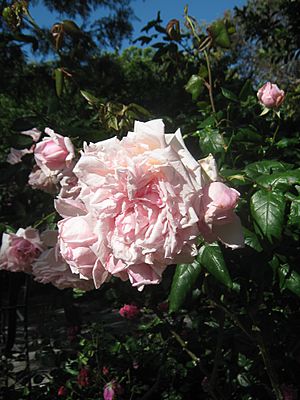
'Lady Medallist', 1912, Hybrid Tea climber. This was the first rose Clark shared with the public. Lady Medallist was also a racehorse.
|
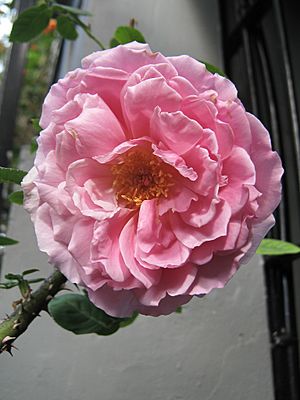
'Lady Somers', 1930, Hybrid Gigantea. Lord Somers was Governor of Victoria from 1926 to 1931. Lady Somers was a pioneer aviator and later became the Chief Guide of the British Empire.
|
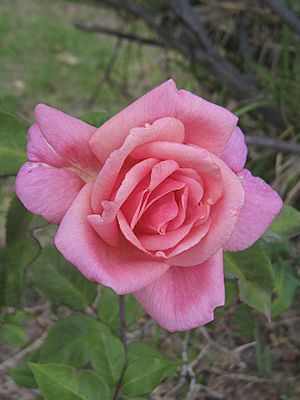
'Lorraine Lee', 1924, Hybrid Gigantea. This is one of the most popular roses ever grown in Australia. Lorraine Lee was a distant cousin of the Clarks.
|

'Lorraine Lee climbing', 1932, Hybrid Gigantea climber. This is a climbing version of 'Lorraine Lee' that was discovered in 1932.
|
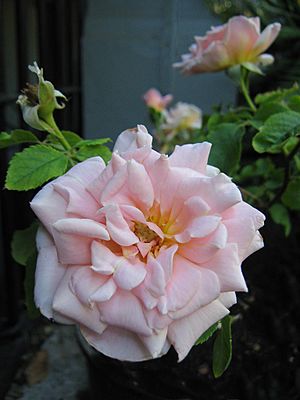
'Mab Grimwade', 1937, small Hybrid Tea. Mabel Kelly was married to Sir Russell Grimwade, a chemist and generous person. They had a large garden.
|
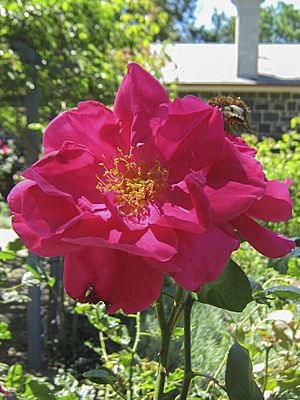
'Madge Taylor', 1930, Hybrid Tea. Madge Taylor grew up on a large farm. She and her father shared interests like golf and hunting with the Clarks.
|
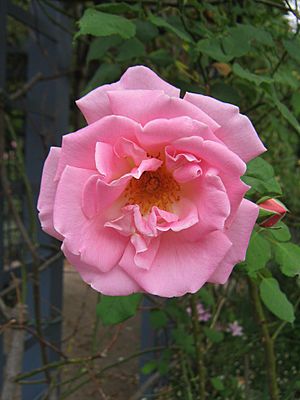
'Margaret Turnbull', 1931, Hybrid Tea climber. Margaret Turnbull was a friend of the Clarks for over 50 years.
|
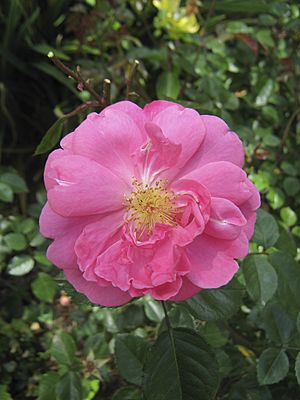
'Marjory Palmer', 1936, Polyantha. Polyantha roses have small flowers in large clusters. Marjory Staughton married Claude Palmer, and both their families knew the Clarks well.
|
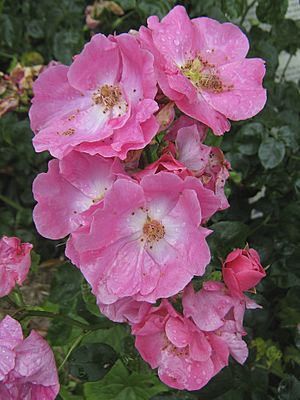
'Mary Guthrie', 1929, Polyantha. Mary Guthrie was the daughter of a farmer and a Senator.
|

'Milkmaid', 1925, Noisette. Noisette roses are known for their clusters of flowers. This rose blooms again and again and smells like milk and honey.
|

'Mrs Albert Nash', 1929, Hybrid Tea. Maud, Mrs Albert Nash, and her family were close friends of the Clarks. This rose looks better in autumn because it can burn in hot sun.
|
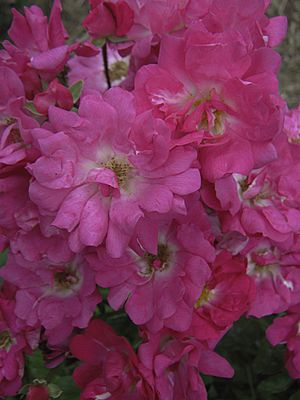
'Mrs Alston's rose', 1940, dwarf Polyantha. Maude and Tom Alston were given this rose by Clark during a visit.
|

'Mrs Fred Danks', 1951, Hybrid Tea. Dorothy and Fred Danks loved plants and were friends with Clark, who often gave them plants to try.
|

'Mrs Harold Alston', 1940, Hybrid Tea. Elizabeth Stewart was married to Harold Alston, a gardening writer. They had a garden with many of Alister Clark's original roses.
|
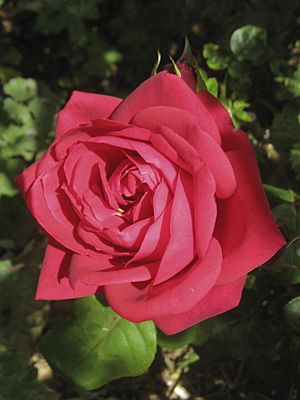
'Mrs Harold Brookes', 1931, Hybrid Tea. Dorothy Bird and her husband Harold Brookes created a large garden north of Woodend, Victoria.
|
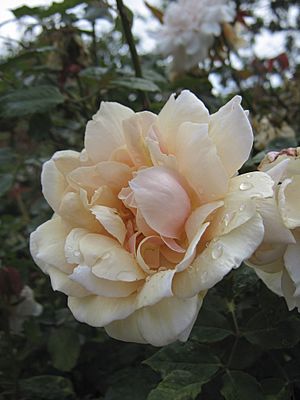
'Mrs Hugh Dettmann', 1930, Hybrid Gigantea. This rose has big orange hips (fruit) in autumn. The Dettmanns loved flowers and had a large garden where Clark liked to test new roses.
|

'Mrs Norman Watson', 1930, Hybrid Tea climber. Susan Wood and her husband loved roses and gardens. They later ran a successful flower shop.
|

'Mrs Richard Turnbull', 1945, Hybrid Gigantea climber. Emily Mackay and her husband Richard Turnbull came from families involved in farming and horse racing. Their horse, Sirius, won the Melbourne Cup in 1944.
|
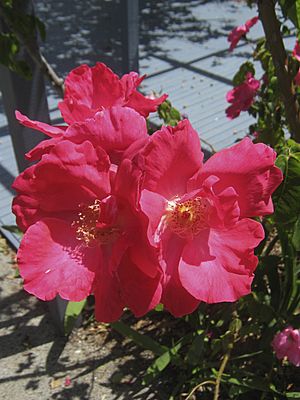
'Nancy Hayward', 1937, Hybrid Tea climber. Nancy Irvine was the daughter of an important government official. She married Ian Hayward. She never really liked the rose Clark named after her.
|
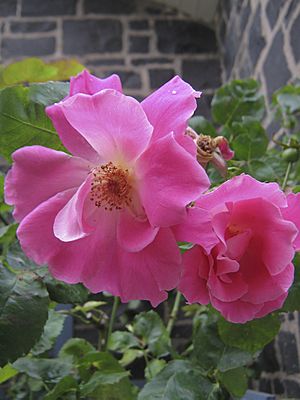
'Nora Cunningham', 1920, Hybrid Gigantea. Nora Cuningham knew the Clarks very well. The rose was named for her when she got married in 1920.
|
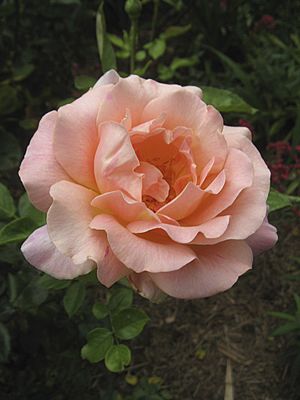
'Peggy Bell', 1928, Hybrid Tea. Peggy Bell was given this rose by Alister Clark, a family friend, on her 21st birthday. However, she believed it wasn't the original rose named for her.
|
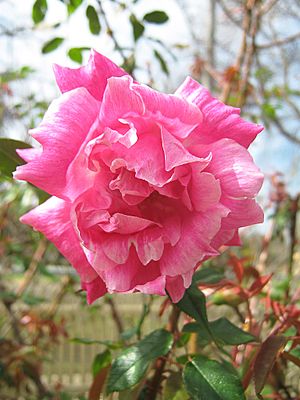
'Pennant', 1941, Hybrid Gigantea. This is a very full, pink rose that can grow up to six meters tall.
|

'Princeps', 1942, Hybrid Tea climber. From the 1920s, Clark loved dark red roses. Princeps is a Latin word that can mean "first among equals."
|
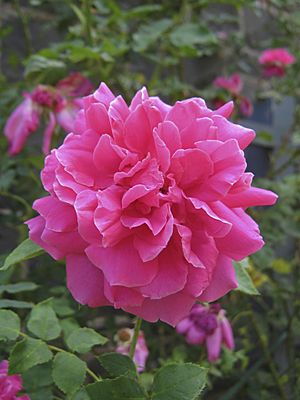
'Queen of Hearts', 1919, Hybrid Tea climber. This rose is very fragrant and grows over three meters tall. Queen of Hearts was probably a racehorse.
|
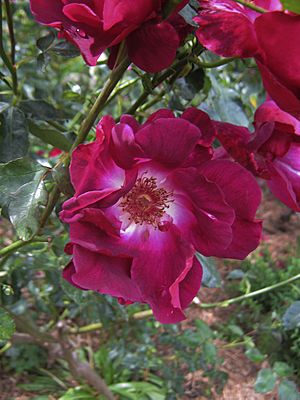
'Restless', 1938, Hybrid Tea. It is said to be named "Restless" because the plant moves freely in the wind.
|
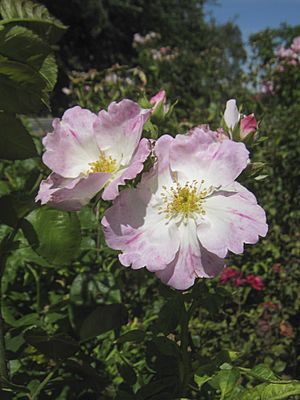
'Ringlet', 1922, Hybrid Tea climber. This rose produces many scented, simple flowers again and again.
|
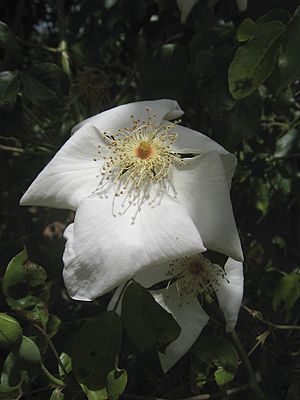
Rosa gigantea. This is the tallest of all wild rose types. It is found in the Himalayas and southern China. Alister Clark was very successful at breeding new roses from it.
|
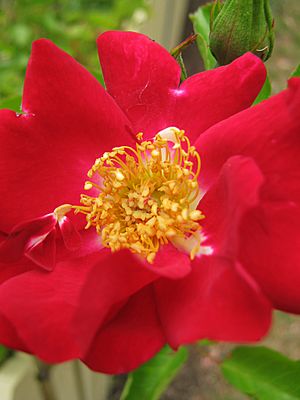
'Scorcher', 1922, dark red Hybrid Gigantea. A "scorcher" was a slang term for a very hot day.
|

'Sheila Bellair', 1937, Hybrid Tea. Sheila Bellair and her sisters were members of a hunting club, as was Alister Clark. Her father was also involved in horse racing with him.
|

'Squatter's Dream', 1923, Hybrid Gigantea. Squatter's Dream was a racehorse. This single rose is thought to be different from Clark's original, which was shorter and had double flowers.
|

'Suitor', 1940, dwarf Polyantha. Suitor was also a racehorse.
|
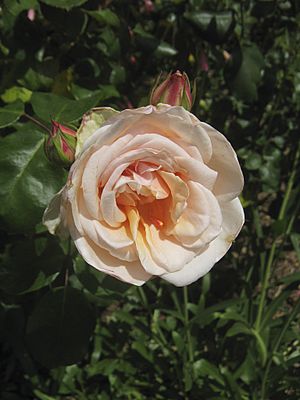
'Sunlit', 1937, Hybrid Tea. This rose has a good scent and is always in bloom.
|
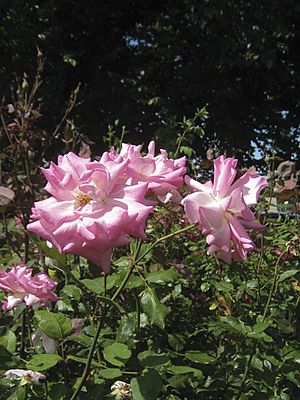
'Sunny South', 1918, Hybrid Tea. This rose was widely used as a tall hedging rose between the World Wars.
|
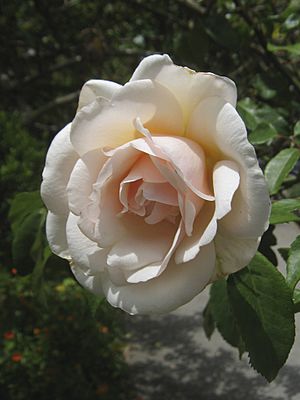
'Tonner's Fancy', 1928, double-flowered Hybrid Gigantea. Tonner's Fancy was a racehorse.
|

'Traverser', 1928, Hybrid Gigantea. Clark named this rose "Traverser" because it could "run and climb." A plant at Glenara grew 40 feet along a fence.
|
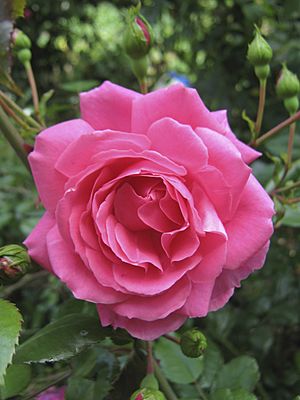
'Zara Hore-Ruthven', 1932, Hybrid Tea. Lady Gowrie was the wife of a State Governor who later became the Governor-General. The Clarks knew the Gowries socially.
|






































































